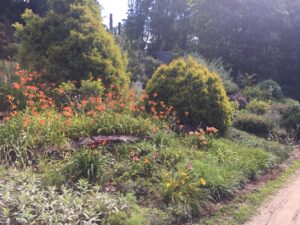Landscaping a Hillside
go.ncsu.edu/readext?909665
en Español / em Português
El inglés es el idioma de control de esta página. En la medida en que haya algún conflicto entre la traducción al inglés y la traducción, el inglés prevalece.
Al hacer clic en el enlace de traducción se activa un servicio de traducción gratuito para convertir la página al español. Al igual que con cualquier traducción por Internet, la conversión no es sensible al contexto y puede que no traduzca el texto en su significado original. NC State Extension no garantiza la exactitud del texto traducido. Por favor, tenga en cuenta que algunas aplicaciones y/o servicios pueden no funcionar como se espera cuando se traducen.
Português
Inglês é o idioma de controle desta página. Na medida que haja algum conflito entre o texto original em Inglês e a tradução, o Inglês prevalece.
Ao clicar no link de tradução, um serviço gratuito de tradução será ativado para converter a página para o Português. Como em qualquer tradução pela internet, a conversão não é sensivel ao contexto e pode não ocorrer a tradução para o significado orginal. O serviço de Extensão da Carolina do Norte (NC State Extension) não garante a exatidão do texto traduzido. Por favor, observe que algumas funções ou serviços podem não funcionar como esperado após a tradução.
English
English is the controlling language of this page. To the extent there is any conflict between the English text and the translation, English controls.
Clicking on the translation link activates a free translation service to convert the page to Spanish. As with any Internet translation, the conversion is not context-sensitive and may not translate the text to its original meaning. NC State Extension does not guarantee the accuracy of the translated text. Please note that some applications and/or services may not function as expected when translated.
Collapse ▲One of the most asked questions I get is, “I have a hillside that I need to landscape, could you make some recommendations on plants?”

There are few ‘groundcover’ plants found in our native forests. The idea of a groundcover plant is a relatively new one. In fact, we do not need ground covers. We only need to do what Mother Nature does and mulch with leaves and sticks!
Mother Nature holds the mountains together with a mulch of leaves and sticks underneath the forest. You do not find natural groundcovers. Most groundcovers are invasive plants i.e. english ivy, periwinkle, etc.
In sunny areas, often we simply plant the whole hillside in creeping shrubs such as cotoneaster or creeping evergreen juniper such as shore juniper or blue rug juniper. These plants work but they are kind of boring to be honest.












